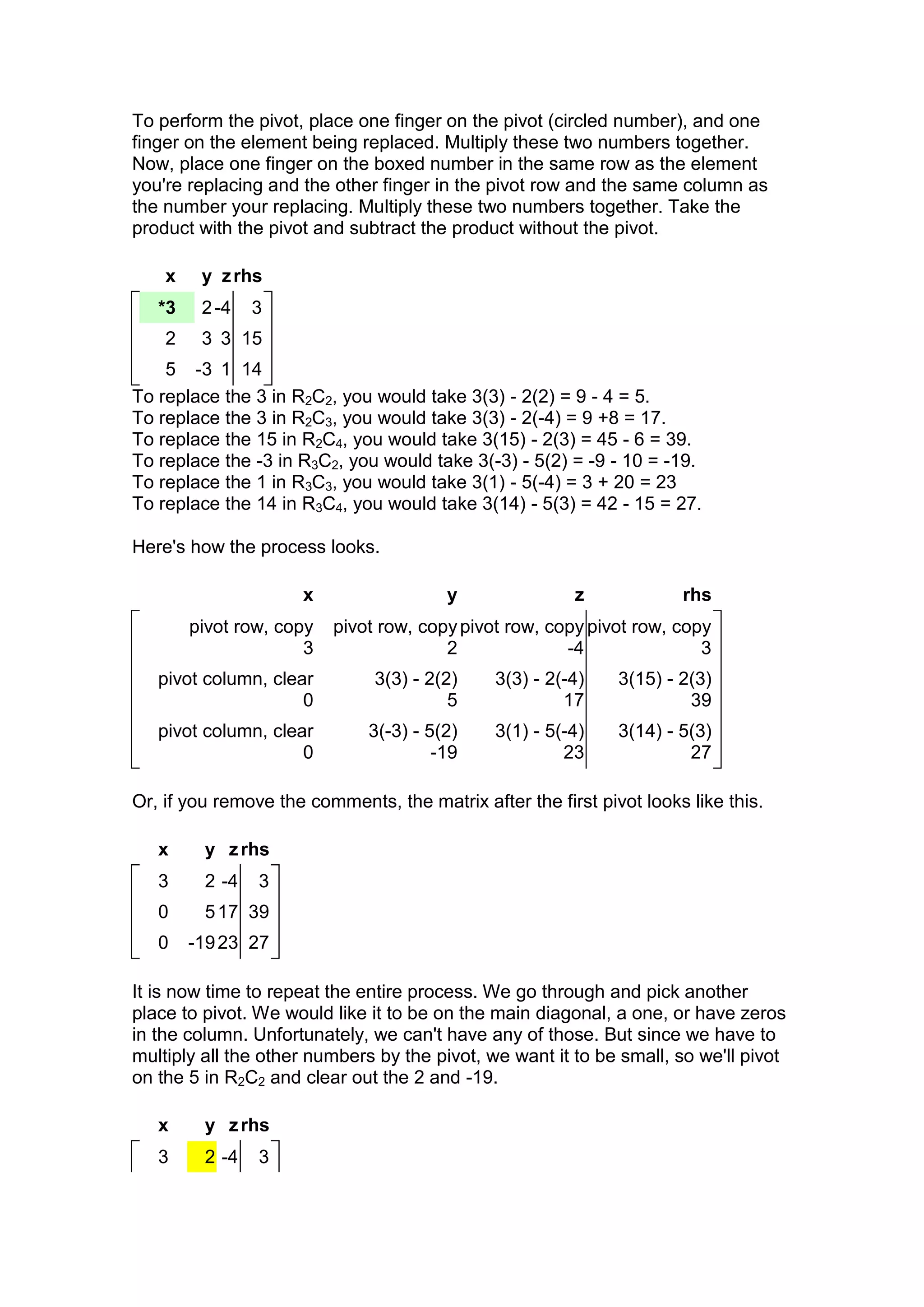The document discusses Gauss-Jordan elimination to solve systems of linear equations. It explains that a system can be represented by an augmented matrix and reduced to row-echelon form using elementary row operations. These include interchanging rows, multiplying rows by constants, and adding rows. The key concept is pivoting, where a row is multiplied and added to others to clear entries above and below the pivot element. Careful selection of the pivot element can minimize calculations during elimination.






